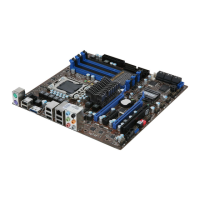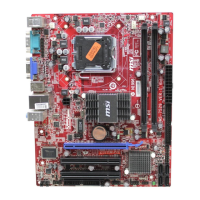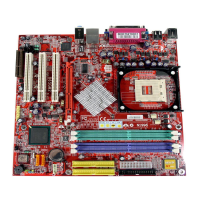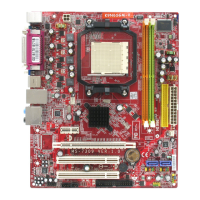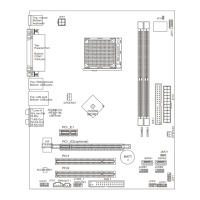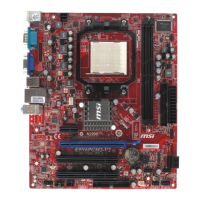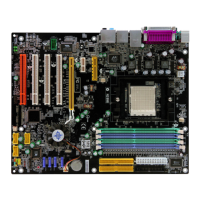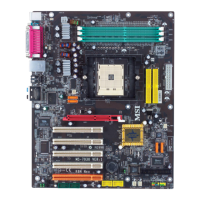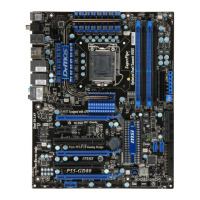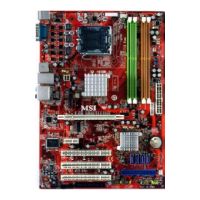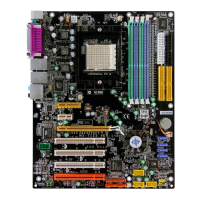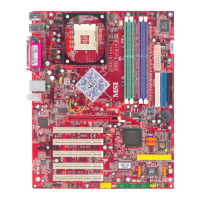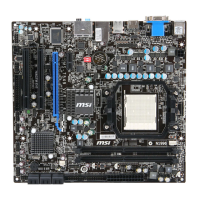
Do you have a question about the MSI 785GTM-E45 - Motherboard - Micro ATX and is the answer not in the manual?
| Form Factor | Micro ATX |
|---|---|
| Chipset | AMD 785G |
| Memory Slots | 4 |
| Maximum Memory | 16 GB |
| Storage Interface | 6 x SATA 3Gb/s |
| RAID Support | RAID 0, 1, 10 |
| Graphics | Integrated ATI Radeon HD 4200 |
| Socket Type | Socket AM3 |
| USB Ports | 12 |
| LAN | Realtek RTL8111DL |
| Expansion Slots | 1 x PCI Express x16, 2 x PCI Express x1, 2 x PCI |
Intellectual property notice of MICRO-STAR INTERNATIONAL regarding document contents.
Lists all trademarks and their respective owners as registered properties.
Details the revision history of the manual, including version and date.
Provides contact information and resources for technical assistance and guidance.
Essential safety guidelines and precautions for operating and handling the equipment.
Statement on compliance with FCC rules for radio frequency interference.
MSI's commitment to environmental protection regarding WEEE directive compliance.
Detailed technical specifications of the 785GTM-E45 series mainboard.
Diagram illustrating the physical layout of components and connectors on the mainboard.
Lists the included accessories and components found in the product package.
Visual guide identifying key components and their corresponding page references for setup.
Step-by-step instructions for installing the CPU and its cooler to prevent overheating.
Guidance on installing DDR2 memory modules and understanding Dual-Channel mode.
Details on connecting the ATX 24-pin and 4-pin power supply connectors to the mainboard.
Description of ports located on the mainboard's back panel, including I/O connectors.
Information on various onboard connectors like FDD, IDE, SATA, and fan headers.
Explanation of jumper settings, specifically the Clear CMOS Jumper (JBAT1).
Instructions on using the Overclock FSB Switch (OCSWITCH1) for frequency adjustments.
Details on PCI and PCI Express slots for expansion cards and their configuration.
Explanation of the APS LED and its indication of CPU power phase modes.
Procedure for accessing the BIOS Setup utility during system startup.
Reference for navigation keys and control functions within the BIOS setup interface.
Explains how to use the BIOS main menu, sub-menus, and access general help.
Details the various configuration categories available in the main BIOS setup menu.
Configuration options for basic system settings like date, time, and IDE/SATA devices.
Advanced settings for system performance, boot options, and hardware features.
Settings for onboard peripherals such as USB, LAN, and ATA devices.
Configuration options for system power saving modes and ACPI functions.
Displays system hardware status including temperatures, fan speeds, and voltages.
Options for managing CPU phase control and LED power indicators for power saving.
Procedure for setting and clearing a BIOS password for system security.
Advanced settings for CPU and DRAM frequencies, voltages, and overclocking.
Utility for flashing the BIOS from a USB drive or booting from a BIOS file.
Options to load Fail-Safe or Optimized Defaults for system stability and performance.
Step-by-step guide for installing the HD audio driver for Windows operating systems.
Configuring audio features, sound effects, and equalizer settings in the Realtek manager.
Adjusting audio volumes, managing playback devices, and enabling multi-streaming.
Configuring multi-channel audio output and managing front/rear panel jack detection.
Explanation of S/PDIF interface for digital audio transfer and output sampling rates.
Guide to testing individual speakers and connecting them for different audio modes.
Options for noise suppression and acoustic echo cancellation for microphone input.
Adjusting 3D positional audio and selecting environmental effects for gaming and applications.
Displaying driver version, DirectX, controller, codec, and selecting utility language.
Details on connecting speakers for 2, 4, 6, and 8-channel audio output configurations.
Introduction to SATA RAID functions and configuring RAID sets using the FastBuild utility.
Displays model, capacity, and assignment of drives attached to the SATA host adapter.
Instructions for creating RAID 0, 1, 10 logical drives and deleting existing RAID sets.
Steps for installing RAID drivers during Windows setup for bootable arrays.
Guide to launching the Dual Core Center utility from system tray, desktop, or start-up menu.
Overview of the main interface, MB/VGA status, and DOT technology activation.
Detailed configuration options for CPU/GPU clocks, voltages, fan speeds, temperatures, and custom profiles.
